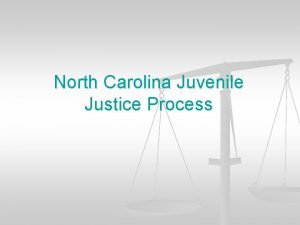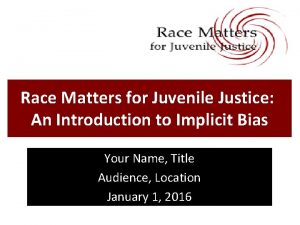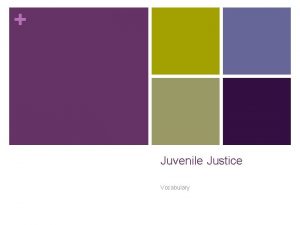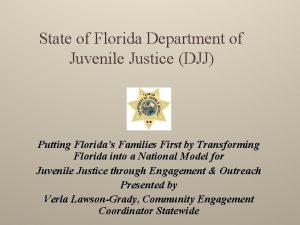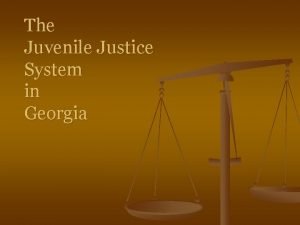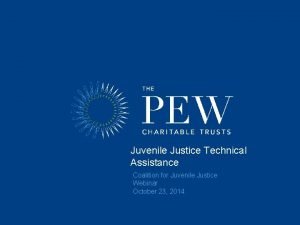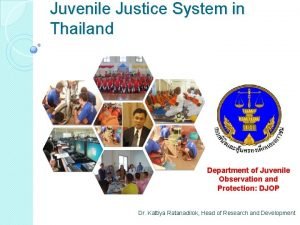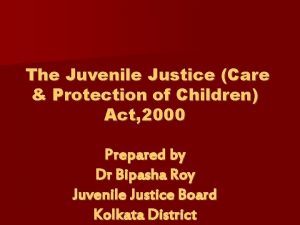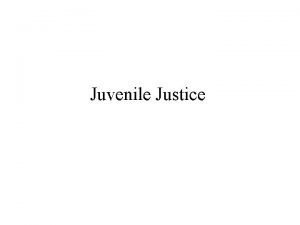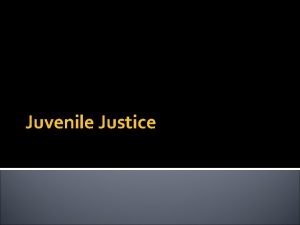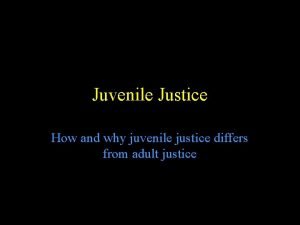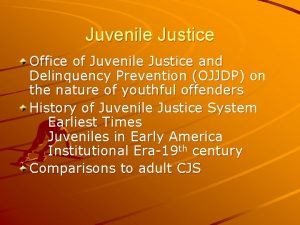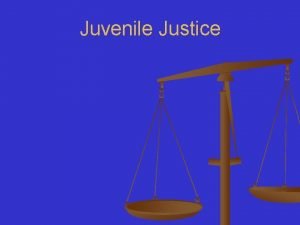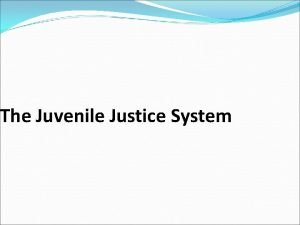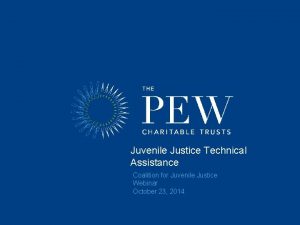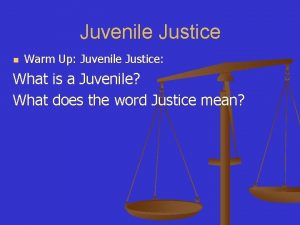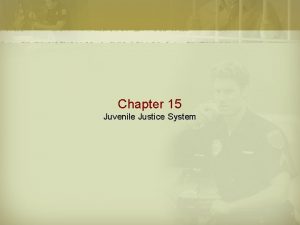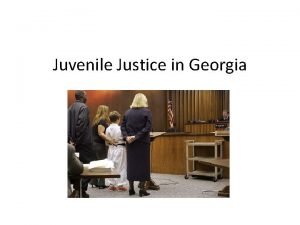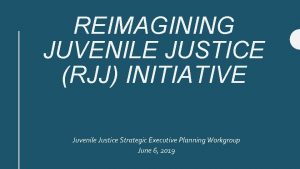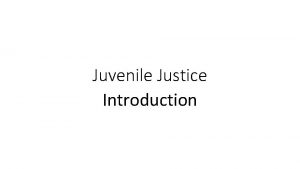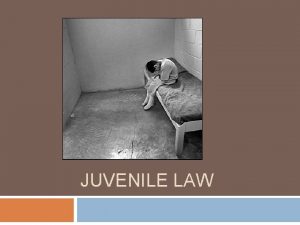Raceethnicity and the juvenile justice process Exploring the



















- Slides: 19

Race/ethnicity and the juvenile justice process: Exploring the over-representation of Latino youth in California’s juvenile justice system Enrique Ruacho May 16, 2009 Advisor: Dr. Elliot Currie

Outline n n n n Introduction Statement of the Problem Research Questions Literature Review Methods Findings Conclusion Acknowledgements

Introduction n Who forms the juvenile justice system? – Police, probation, and judicial officers – Public defenders, prosecutors, and community advocates n What does it do? – Public safety – Treat and rehabilitate youth

Introduction n Disproportionate Minority Contact (DMC) n Relative Rate Index (RRI) – Compares minority youth to White youth at various stages

Statement of the Problem Source: Juvenile Justice in California, 2006

Research Questions n Does the juvenile justice system in California operate with a bias that differentially disadvantages Latino youth? n How does that bias manifest and operate at different stages of the justice system? n How might this system be changed?

Literature Review n Research shows that minority youth are more likely to be… – Apprehended and arrested – Detained before trial – Receive a disposition at trial Source: (Armstrong & Rodriguez, 2005; Brown Ray & Alarid, 2004; Leiber & Fox, 2005; Leiber & Johnson, 2008; Mac. Donald, 2003; Secret & Johnson, 1997; Tittle & Curran, 1988)

Literature Review n Gap: Focuses on White youth and African-American/minority/non-white youth n Gap: Research overwhelmingly uses a quantitative model of analysis – Exception: Conley, 1994

Methods n Site: Los Angeles County n Participants: – Police, probation, and judicial officers, public defenders, prosecutors, and community advocates n Sample size: N=9

Methods n Sampling strategy – Publicly available contact info – Social networks n Data collection procedures – Government reporting systems – Interviews between 45 min. to 1 hour – January to April 2009

Methods n Data Analysis – Recurring themes and trends n Researcher’s study position relative to the

Findings Dual Roles and Narrow Tasks Decentralized network of justice officials n Narrow tasks n Lack of a holistic perspective n

Findings Dual Role and Narrow Tasks n Public Defender: “… what I try to do is defend my clients… make sure that they have good legal representation, and make sure that all their constitutional rights are being protected. ” (March 2009)

Findings Dual Roles and Narrow Tasks n Focus is on youth conduct, rather than contributing factors n Judicial Officer 1: “I mean there’s just a bunch of reasons… the system has to deal with the conduct” (January 2009).

Findings Systematic Discrimination n Latino n Bias: youth face severe adversities Sociological perspective vs. Legal elements

Findings Rehabilitation: An Arduous Task Not a shared goal n Lack of resources n n Community Advocate: “…it’s really difficult for organizations like us… I need 20 case managers. I need more resources” (February 2009).

Conclusion n Policy recommendations – How to reduce bias through policies? – Juvenile justice reform n Future research – Issues of juvenile delinquency and violence in the educational system

Acknowledgements n Professor Elliott Currie n Professor Kristen Day n UROP n Taylor Hogg n Angel Ruacho

Questions? ? ?
 North carolina juvenile justice process
North carolina juvenile justice process Chapter 11 basic concepts street law
Chapter 11 basic concepts street law The juvenile justice and welfare act of 2006
The juvenile justice and welfare act of 2006 Race matters for juvenile justice
Race matters for juvenile justice Juvenile delinquency vocabulary words
Juvenile delinquency vocabulary words State of florida department of juvenile justice
State of florida department of juvenile justice Juvenile justice alternative education program
Juvenile justice alternative education program Georgia juvenile justice system
Georgia juvenile justice system Juvenile justice act 2000
Juvenile justice act 2000 Juvenile justice system in georgia
Juvenile justice system in georgia Coalition for juvenile justice
Coalition for juvenile justice Minnesota juvenile justice system
Minnesota juvenile justice system Department of juvenile observation and protection
Department of juvenile observation and protection Importance of nature of delinquency
Importance of nature of delinquency Poverty and juvenile delinquency
Poverty and juvenile delinquency Cncp and ccl
Cncp and ccl Juvenile court durango
Juvenile court durango Division of criminal justice ct
Division of criminal justice ct Sjpu meaning
Sjpu meaning Dermatomyocytis
Dermatomyocytis
